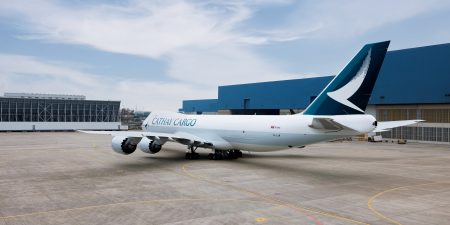What are the flows in South Korea?
They are similar to Japan’s. The top export is semiconductors because of Samsung, which produces these chips. Then there are a lot of electronic parts for consumer goods being exported.The other big export item is perishables – South Korea is putting a lot of effort into developing fruit exports to Hong Kong and Southeast Asia. Imports are also similar to Japan, with some foodstuffs along with machinery and semiconductor-related components to make industrial goods for export.
How have your network and frequencies grown since last year?
Japan is served by 10 Cathay Cargo freighters a week – six to Narita and four to Kansai International (KIX) at Osaka, which fly to HKG via ICN – while Incheon receives three freighters and 24 passenger flights. Japan’s passenger network is rebuilding from last year, with 44 flights weekly split between Tokyo’s two airports Narita and Haneda, 24 to KIX and 20 between Fukuoka, Sapporo and Nagoya. In addition, our region is served by near daily Air Hong Kong services to Narita, KIX, Nagoya and Incheon, and the team acts as GSAs for those flights as well as HK Express flights to the region.
What proportion of your cargo exports use Cathay Cargo’s special solutions?
In Japan, we have a very high proportion of cargo that uses our specialist shipment solutions – 70 per cent in 2022, which was the highest across the network. In South Korea, it’s lower at 40 per cent – our focus is to grow this proportion of special-handling shipments. So far, we have again achieved 70 per cent in the first quarter handling shipments. So far, we have again achieved 70 per cent in the first quarter in Japan, bolstered by perishable exports using Cathay Fresh, and taking the place of priority shipments in what had been a constrained market.
How are you enjoying your South Korea role?
Greatly, we work together well as Cathay colleagues. There are similarities in our markets because customer expectations are equally high, and we are both committed to reaching our targets, which reflects similarities in how we think and work. We use English when we meet and it feels like one team.
What are the current challenges and opportunities?
The big challenge is the ramp up in capacity in belly space from the resumption of our passenger network in a soft market. However, we have an advantage with our freighters and being able to offer main-deck space. We won business this year to carry aircraft engines. We have a deal with an airline to transport Rolls-Royce Trent XWB engines from its Airbus A350s to Hong Kong for maintenance. As for the rest of the year – watch this space!






